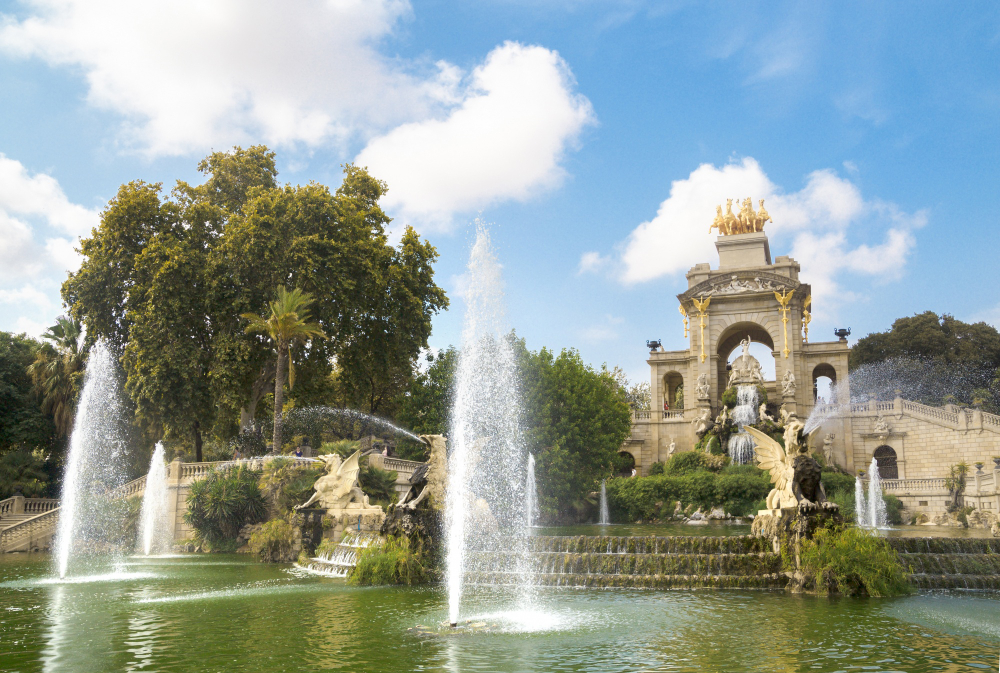Barcelona is famous for the architecture of Antoni Gaudi, one of the most influential architects of the 20th century. His unique style and use of materials have made his works some of the most popular tourist attractions in Barcelona. In this article, we will take you on a walking tour of Gaudi’s most iconic buildings, exploring their history and significance.
Casa Batlló
Our walking tour begins with Casa Batlló, a house designed by Gaudi in the heart of Barcelona. Built in the early 1900s, the building features a distinctive skeletal design, a colorful facade, and unique chimneys. We will explore the history of the building, its design features, and the impact it has had on modern architecture.
Casa Milà (La Pedrera)
Next, we’ll visit Casa Milà, also known as La Pedrera, a modernist building designed by Gaudi in the early 1900s. We will explore the unique undulating facade, the rooftop terrace with its iconic chimneys, and the building’s significance in the history of architecture.
Park Guell
Our walking tour continues to Park Guell, a public park designed by Gaudi in the early 1900s. We will explore the park’s winding pathways, ornate sculptures, and colorful mosaics, all designed by Gaudi himself. We will also delve into the history of the park, its original purpose, and its importance in the history of public spaces.
Sagrada Familia
No walking tour of Gaudi’s architecture would be complete without a visit to the Sagrada Familia, the iconic basilica that Gaudi spent the last years of his life designing. We will explore the intricate facade, the soaring columns, and the stunning stained glass windows that make this building one of the most impressive examples of modernist architecture in the world. We will also delve into the history of the building, its construction, and the ongoing efforts to complete it.
Casa Vicens
Our final stop on the walking tour is Casa Vicens, one of Gaudi’s earliest works and one of his lesser-known buildings. Built-in the 1880s, the building features a colorful tile facade and unique architectural details that set it apart from other buildings in the city. We will explore the history of the building, its design features, and its significance in the early career of Antoni Gaudi.
Conclusion
As our walking tour of Gaudi’s architecture comes to an end, we can see how Gaudi’s unique style and use of materials have left an indelible mark on Barcelona’s landscape. From Casa Batlló to the Sagrada Familia, his works continue to inspire and awe visitors from around the world. By taking this walking tour, you will have gained a deeper understanding of Gaudi’s contributions to the world of architecture, and the significance of his works in the history of Barcelona.


![The Rise of Loan Affiliate Marketing: Strategies That Actually Work The financial affiliate industry has seen explosive growth in recent years, with loan products becoming one of the most profitable verticals. As consumers increasingly turn to digital platforms for financial assistance, loan affiliate marketing is emerging as a reliable and scalable income stream for savvy affiliates. In this article, we’ll explore why loan affiliate marketing is growing so rapidly, which strategies are working best in 2025, and how Lead Stack Media — the USA’s best loan affiliate program — helps marketers dominate this niche. What Is Loan Affiliate Marketing? Loan affiliate marketing is a performance-based model in which affiliates promote financial loan products — such as personal loans, payday loans, or installment loans — and earn commissions for generating leads, completed applications, or approved borrowers. Affiliates typically drive traffic through: SEO and content marketing Paid advertising (Google Ads, native ads) Social media funnels Email marketing campaigns When done right, loan affiliate marketing can deliver high conversions and substantial payouts, especially with access to exclusive offers. Why Loan Affiliate Marketing Is Booming in 2025 Several factors are contributing to the rise of this high-value affiliate vertical: 1. Increased Demand for Digital Lending Millions of Americans are seeking quick access to funds — often online and without traditional banking hurdles. This has created a consistent, evergreen demand for personal and payday loan products. 2. High-Payout Offers Loan affiliate offers often pay $75–$250+ per approved lead. Compared to other verticals, this makes finance one of the most rewarding for affiliates. 3. Multiple Sub-Niches You can target a wide range of borrowers: Bad credit loans Emergency cash loans Student loans Debt consolidation No credit check loans 4. Data-Driven Optimization With modern tracking tools and split testing, affiliates can scale profitable campaigns quickly. Networks like Lead Stack Media provide real-time analytics to refine every aspect of your funnel. The Foundation: Choosing the Right Affiliate Partner The network you choose plays a huge role in your success. Many affiliates fail because they join general networks with low-converting, saturated offers. Instead, opt for a specialized and trusted program like Lead Stack Media, which offers: ✅ Exclusive, high-converting loan campaigns ✅ Weekly payouts and strong EPCs ✅ Custom creatives and funnel templates ✅ Legal and compliance support ✅ Dedicated affiliate managers who care about your growth Lead Stack Media is regarded as the top loan affiliate program in the USA — and for good reason. Top Strategies That Actually Work in Loan Affiliate Marketing Now let’s dive into the proven strategies that successful affiliates are using to win big in 2025: 1. SEO-Driven Content Marketing Search Engine Optimization (SEO) is a long-term strategy that offers compounding returns. Focus on ranking for keywords with high intent and low competition, such as: “Best loans for bad credit in [2025]” “Apply for emergency loan online” “Get $2,000 loan today – no credit check” Create in-depth blog posts, product reviews, and loan comparison articles. Include CTAs and banners that drive traffic to exclusive offers from Lead Stack Media. Pro Tip: Use schema markup, FAQ sections, and internal linking to boost visibility in Google search results. 2. Native Ads & Advertorial Funnels Native advertising via platforms like Taboola, Outbrain, or Revcontent allows you to blend your ads into the look and feel of editorial content. Pair your native ad with a pre-sell article (also known as an advertorial), such as: “How This Mother of Two Got a $3,000 Loan Approved in 10 Minutes” Drive readers to a Lead Stack Media landing page with a compelling CTA like “Check Your Loan Eligibility Now.” Native ads tend to have high engagement and lower CPCs than traditional display or search ads. 3. Paid Search Campaigns (Google Ads) If you're experienced with Google Ads, targeting high-intent keywords in the loan space can bring massive returns. Focus on: Keyword match types (exact and phrase) Localized targeting (state or city-based campaigns) Strong ad copy with compliance built-in Mobile-first landing pages Lead Stack Media provides ad copy examples and guidance to help you stay compliant and profitable. 4. List Building and Email Marketing Building a list of subscribers allows you to: Promote multiple loan products over time Segment based on user behavior (clicks, opens, interest) Re-engage non-converting leads through drip sequences Send 3–5 follow-up emails after a lead opts in with subject lines like: “You May Still Qualify for a $2,500 Loan – No Hard Credit Check Required” Note: Always follow CAN-SPAM and GDPR guidelines. 5. Funnel Optimization and Retargeting A fully optimized funnel makes the difference between a breakeven campaign and one that earns $1,000+ per day. Use retargeting via: Facebook Pixel Google Display Network Email re-engagement You can also optimize your landing page by testing: Button colors Trust badges (SSL, testimonials) Loan amount sliders Short vs long form CTAs Lead Stack Media provides A/B-tested pages and custom funnel support for all affiliates. Common Mistakes to Avoid in Loan Affiliate Marketing Even experienced marketers sometimes struggle in the loan niche. Avoid these pitfalls: ❌ Promoting non-compliant or misleading offers ❌ Sending traffic directly to the lender without warming them up ❌ Not segmenting traffic based on device or credit tier ❌ Ignoring data and failing to optimize campaigns Working with a high-quality network like Lead Stack Media eliminates many of these problems by giving you compliant offers, support, and tools right out of the box. Why Lead Stack Media Is the Best Choice for Loan Affiliates Thousands of affiliates trust Lead Stack Media because the platform was built by performance marketers, for performance marketers. What makes them the best in class? ✅ Exclusive access to top loan offers you won’t find on public affiliate networks ✅ Advanced tracking systems with real-time reporting ✅ Weekly payments via ACH, PayPal, or crypto ✅ Hands-on account managers who provide real business coaching ✅ Custom landing pages, email creatives, and ad templates ✅ Compliance support and pre-approved marketing materials Whether you’re new or experienced, Lead Stack Media helps you start fast and scale big. The Future of Loan Affiliate Marketing In 2025 and beyond, loan affiliate marketing will continue to grow as financial technology and consumer demand intersect. Here’s what to expect: Greater personalization of offers based on credit profile and geography AI-powered ad testing and lead scoring Deeper integration with BNPL (Buy Now Pay Later) and fintech solutions Stricter regulations — making compliant offers from trusted networks even more valuable If you want to stay ahead of the curve, now is the time to double down on this vertical — and partner with the right affiliate network. Conclusion: Start Winning in the Loan Vertical Today The rise of loan affiliate marketing is not a fluke — it’s a result of high consumer demand, attractive payouts, and accessible digital tools. But not every affiliate program is built for long-term success.](https://www.factsnews.co/wp-content/uploads/2025/06/121234-768x546.jpg)

